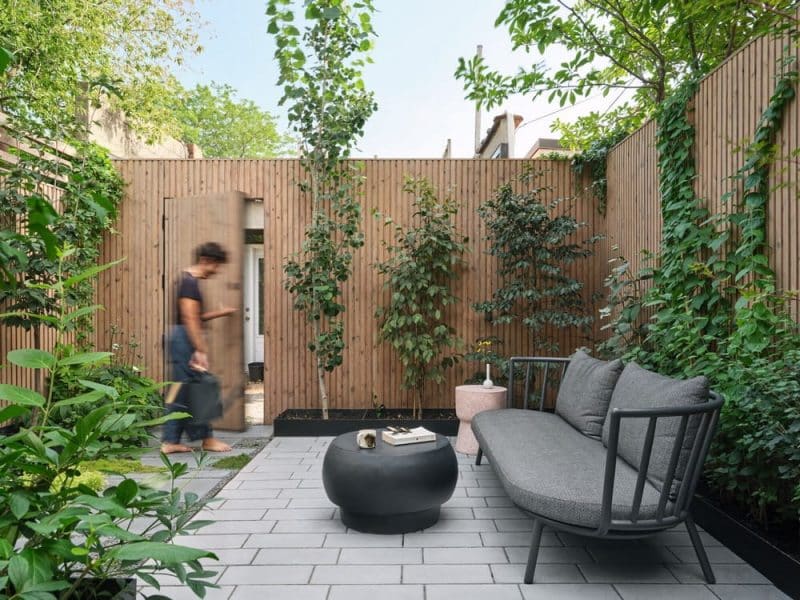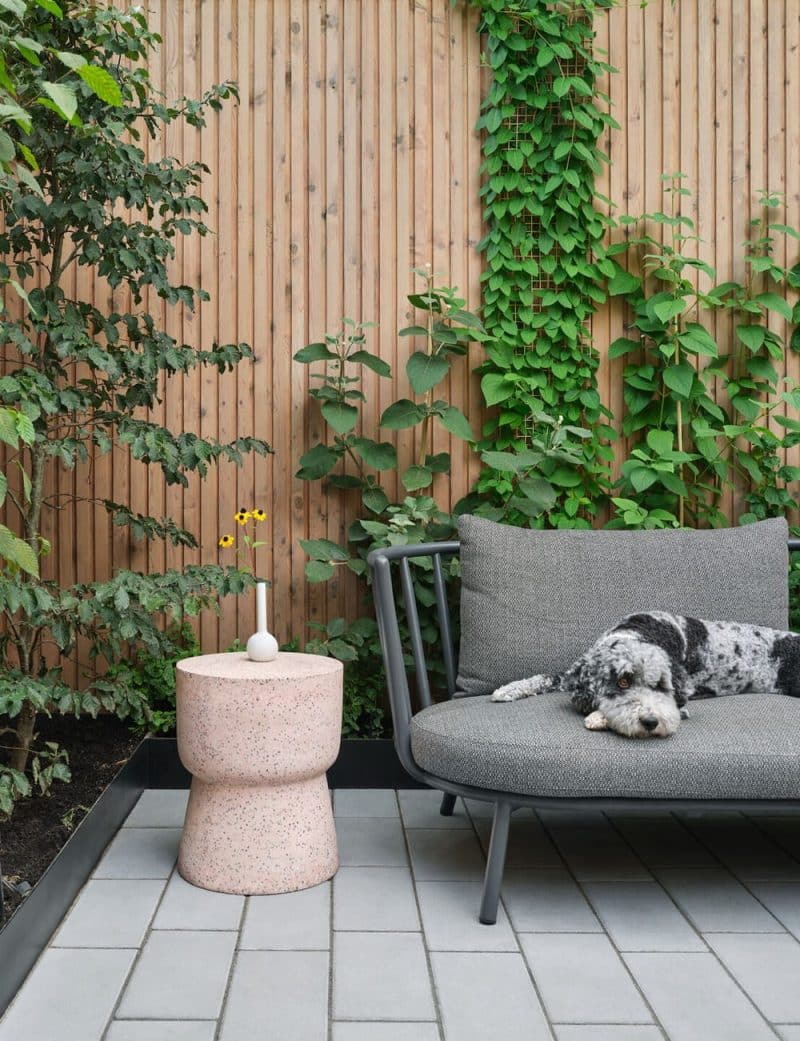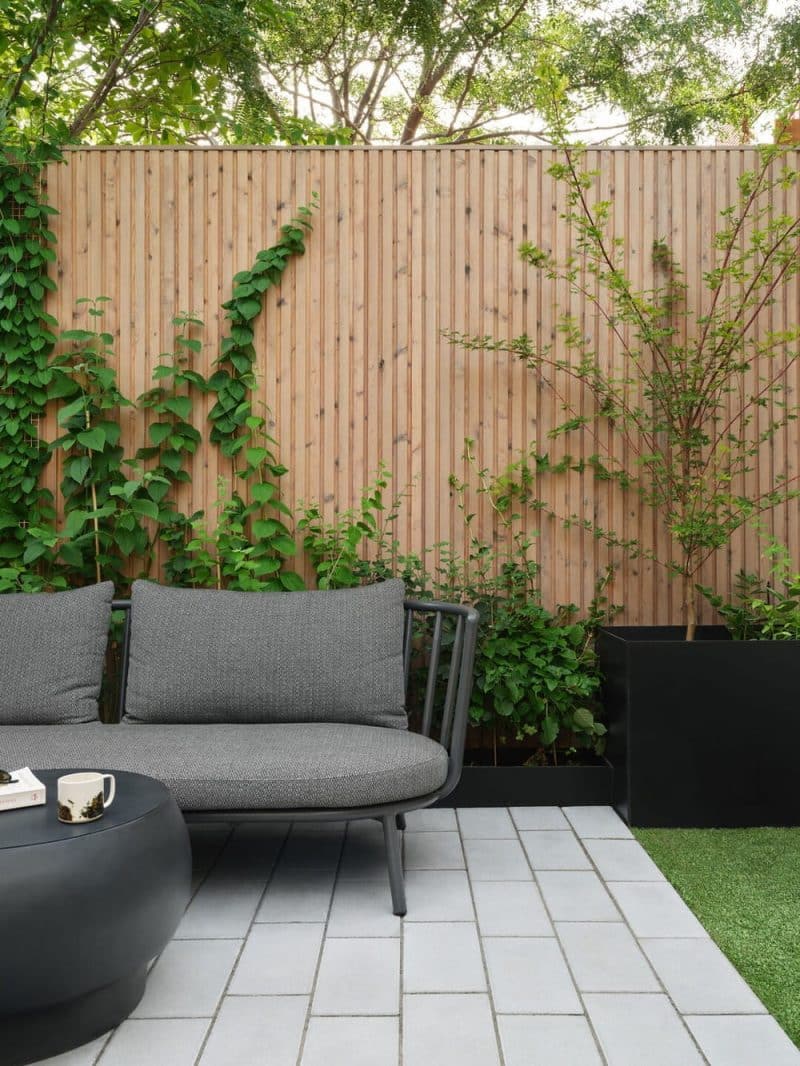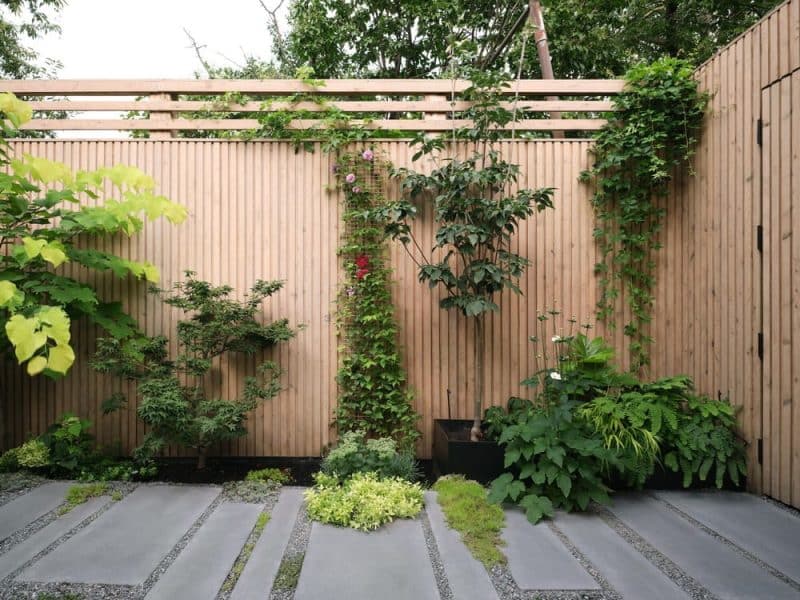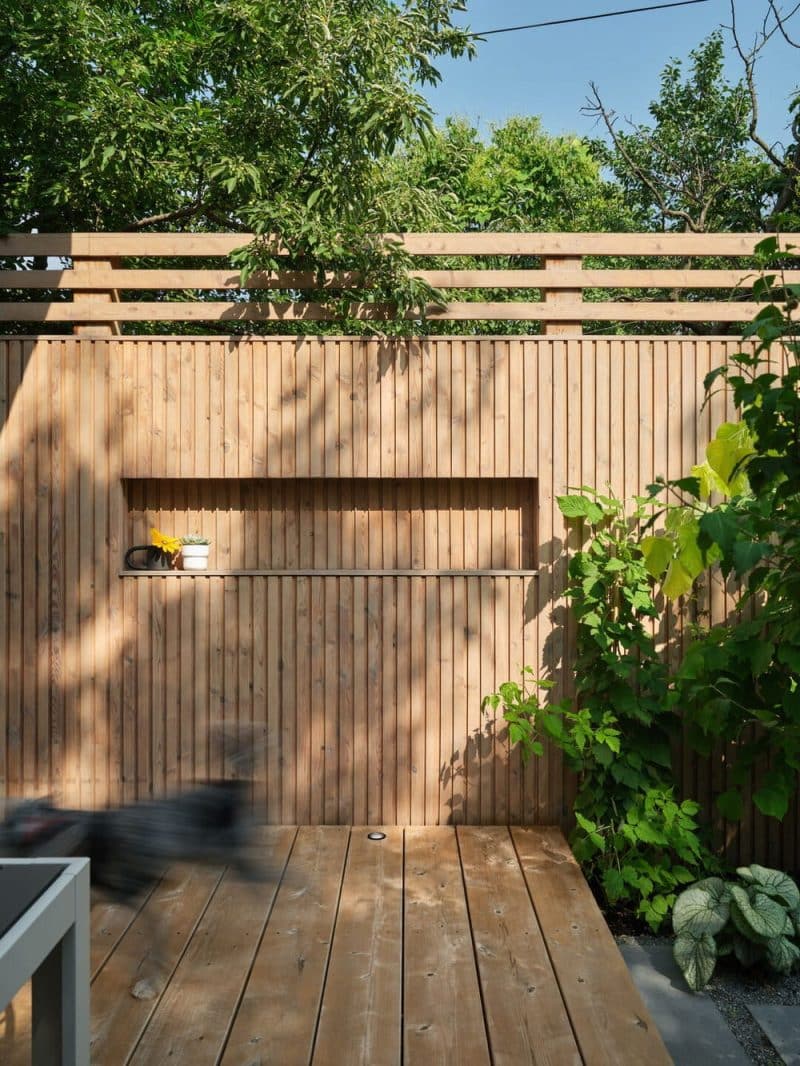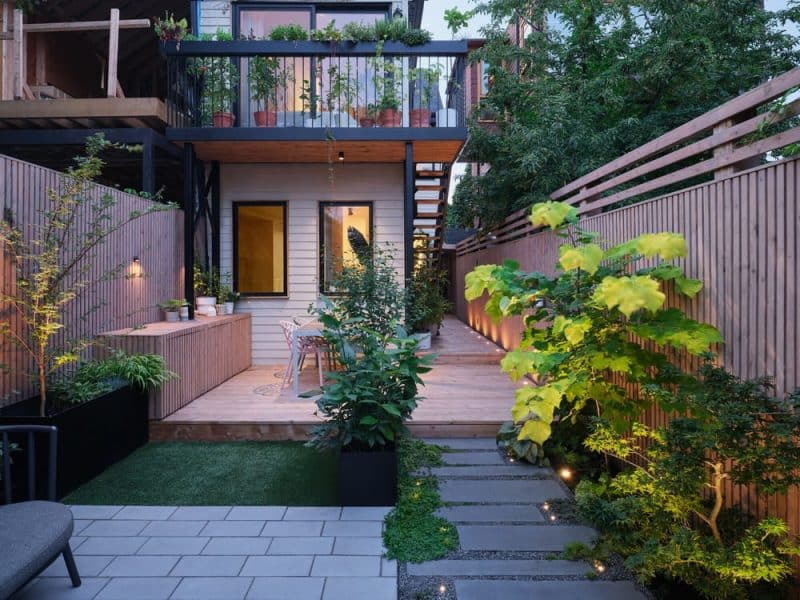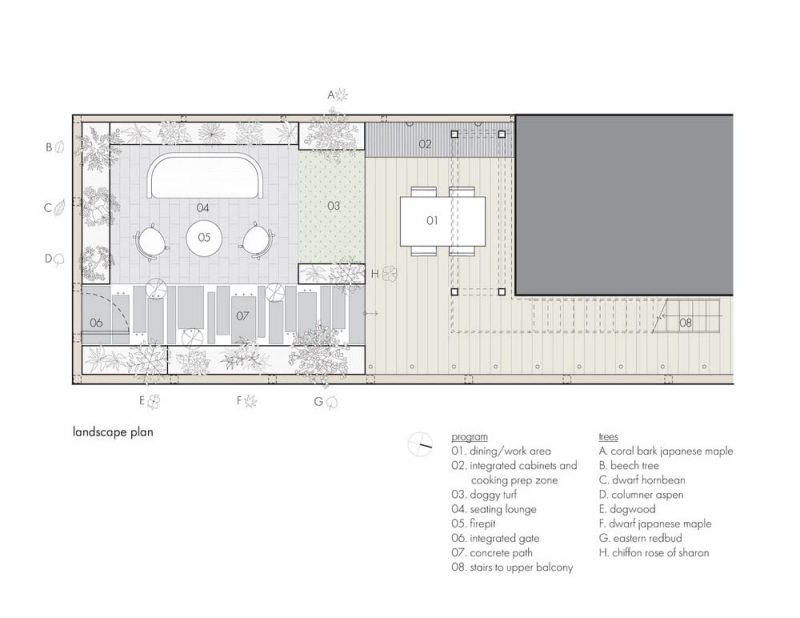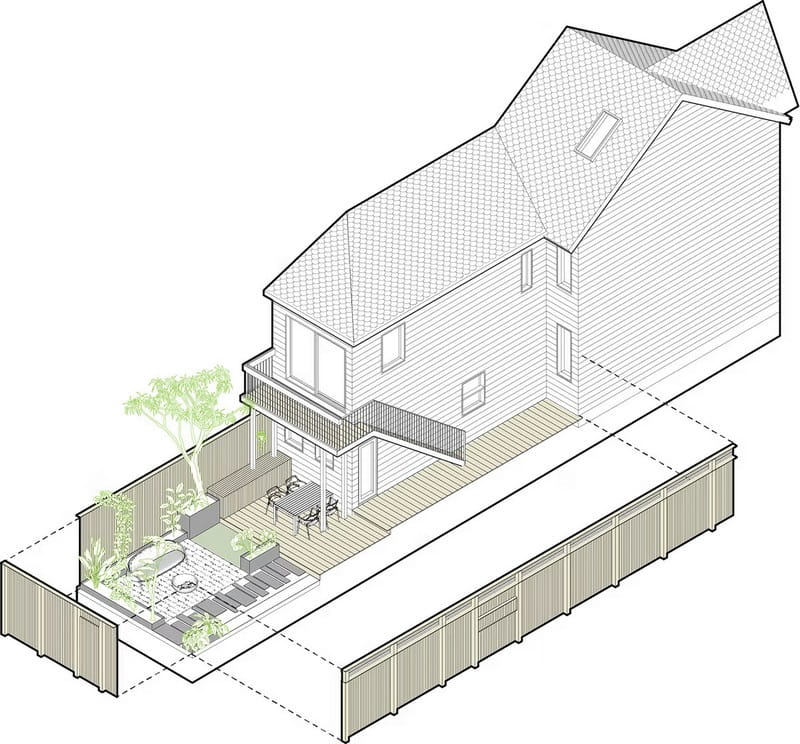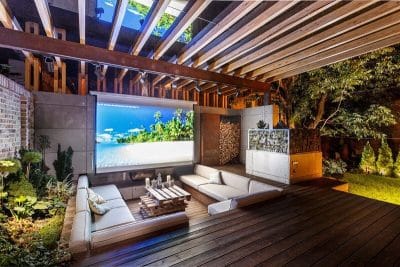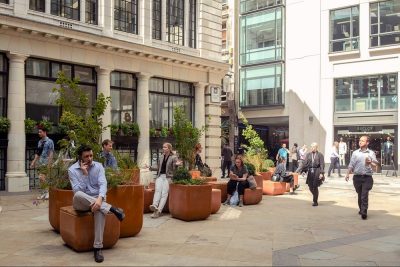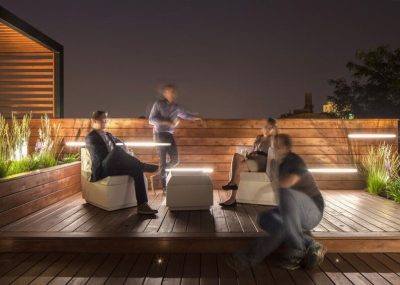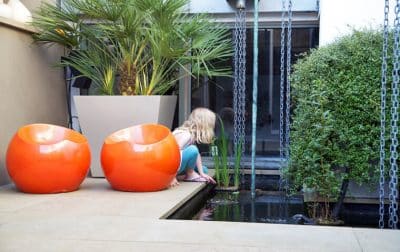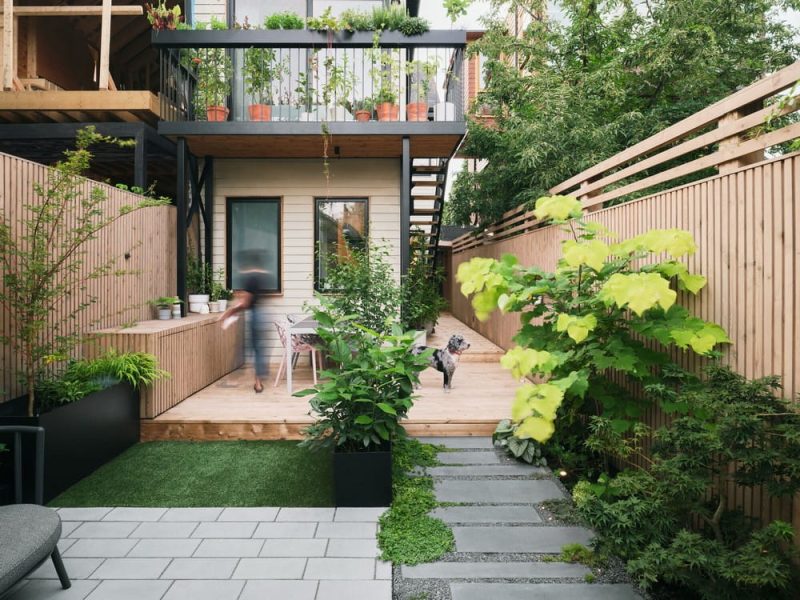
Project: Gallery Garden
Architecture: REIGN Architects
Location: Little Italy, Toronto, Ontario, Canada
Area: 533 ft2
Year: 2021
Photo Credits: Doublespace Photography
Gallery Garden by REIGN Architects transforms a compact 533 sq ft urban backyard into a multifunctional oasis that seamlessly merges personal retreat with professional workspace. Nestled behind a mid-century home and studio, this design celebrates Mediterranean horticultural heritage while addressing the realities of tight city living.
Dual Zones for Living and Working
First, the yard divides into two distinct yet connected areas. On one side, a sunken lounge—complete with plush seating—invites reading and relaxation beneath the canopy of curated plantings. On the other, a cooking and dining platform doubles as an open-air boardroom, enabling office and client meetings amid fresh air and greenery. Between them, an animated paver and gravel path—flanked by inground lighting and low-lying shrubs—guides movement from the house to the laneway.
A Gallery-Like Plant Backdrop
Next, a monolithic fence of vertical ship-lap eastern white cedar provides a clean, continuous canvas for the garden’s botanical “exhibits.” Consequently, seasonal foliage and floral blooms—ranging from springtime peonies, clematis, and tulips to autumnal hornbeams and beeches—are showcased like art pieces. Moreover, the primary seating faces this living gallery, offering hours of contemplative connection with nature.
Innovative Materials and Local Craftsmanship
Meanwhile, the garden’s construction highlights local resources and bespoke techniques. For example, charcoal-pigmented concrete pavers—cast using 2×6 formwork—interlock with black granite inlays, creating textured reliefs that cradle creeping vines. Additionally, all cedar elements (fence, cabinetry, deck boards, and stair treads) were milled locally within a tight delivery radius, reinforcing sustainability and regional identity.
Pollinator-Friendly Planting
Furthermore, Gallery Garden supports urban ecology by featuring native species such as eastern redbud, lilac, Solomon’s seal, and aspen. As a result, the first planting season saw a surge of leaf-cutter bees, honeybees, hornets, ladybugs, and beetles—testament to the garden’s success as a habitat.
Ultimately, Gallery Garden exemplifies how thoughtful design can expand outdoor living, honor ancestral gardening traditions, and foster biodiversity—all within a petite urban footprint.
